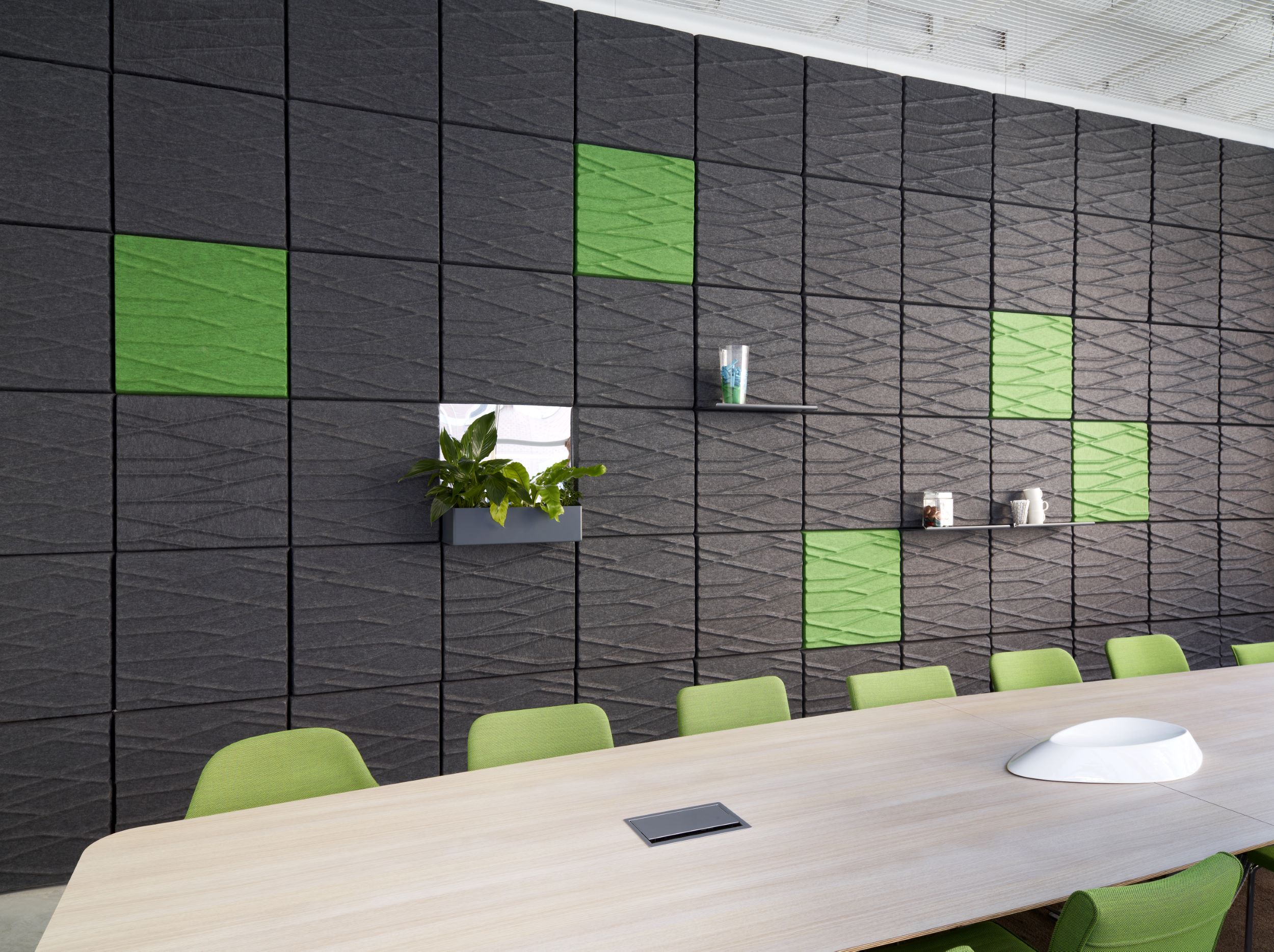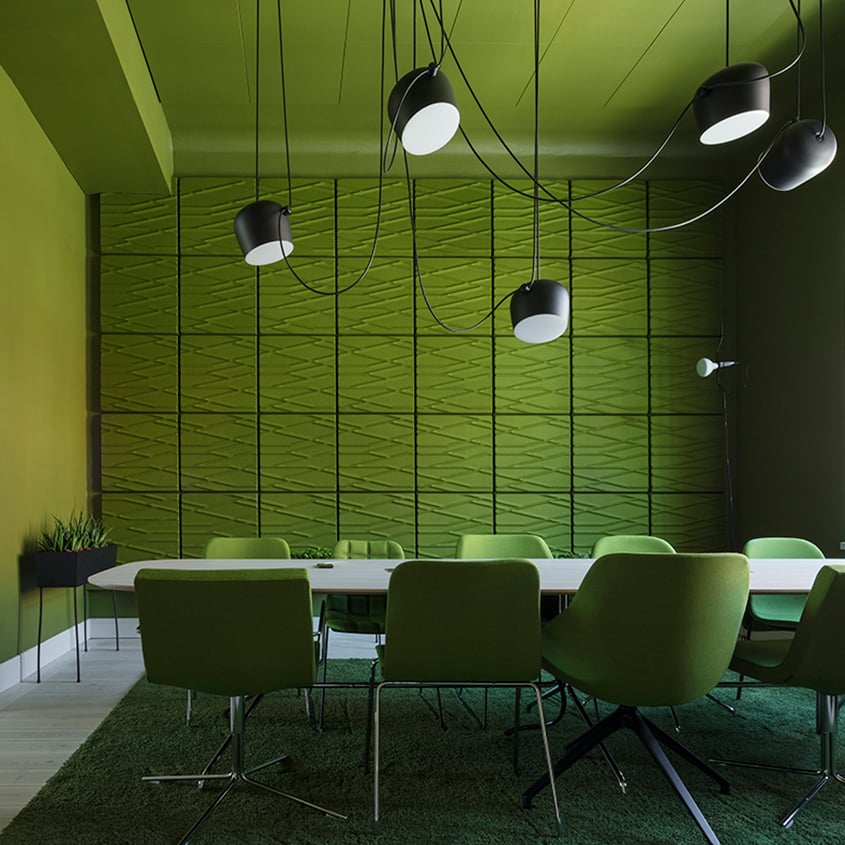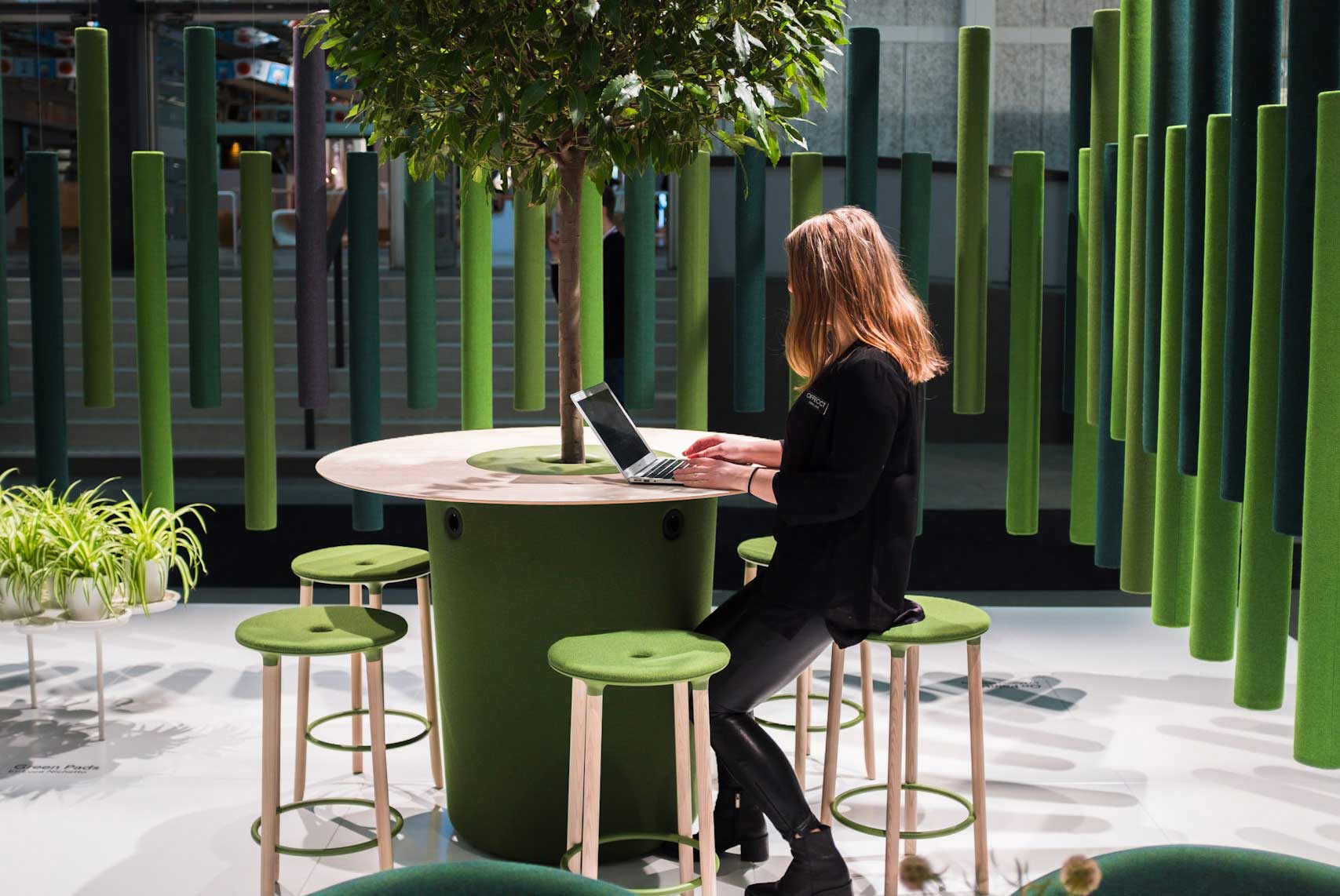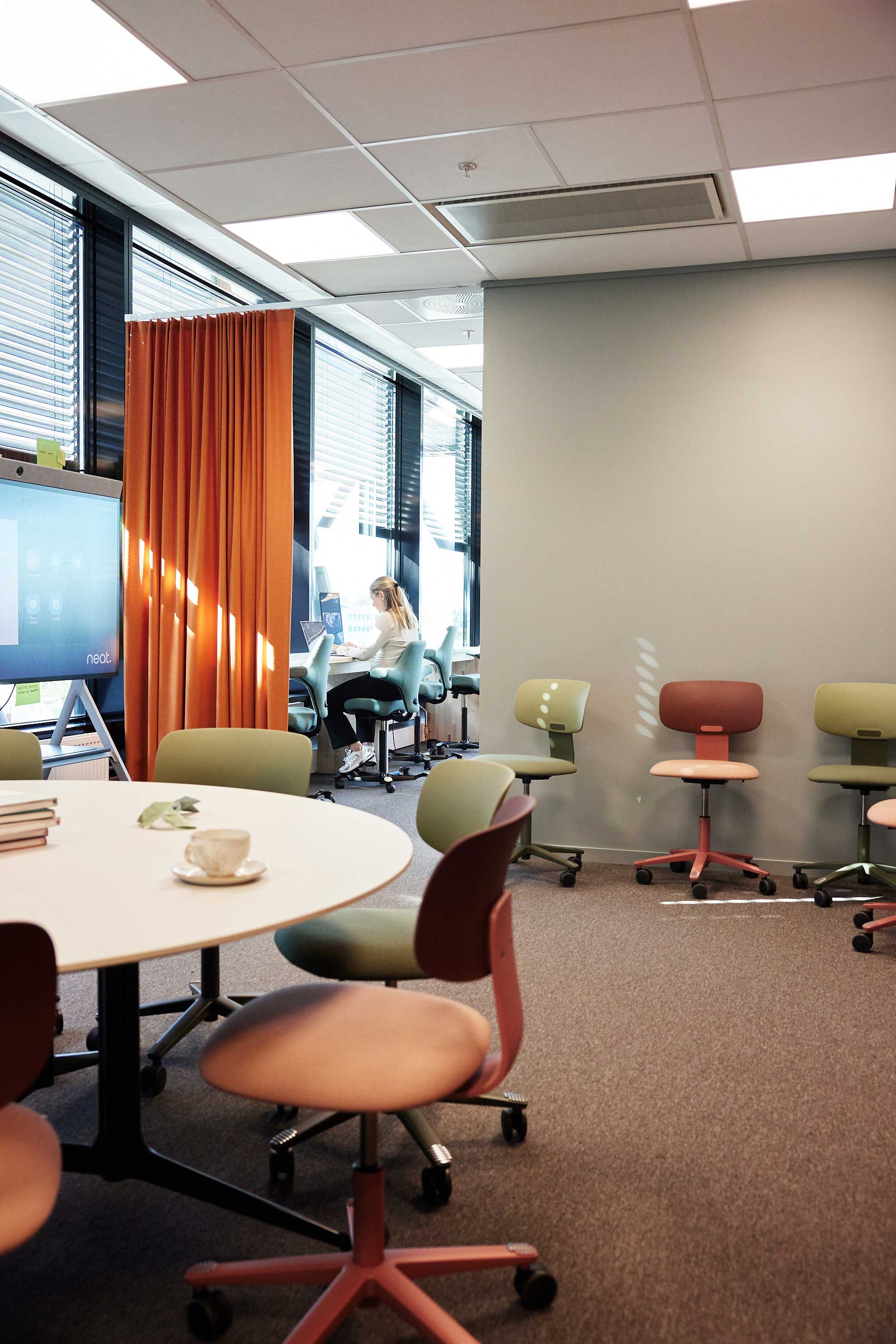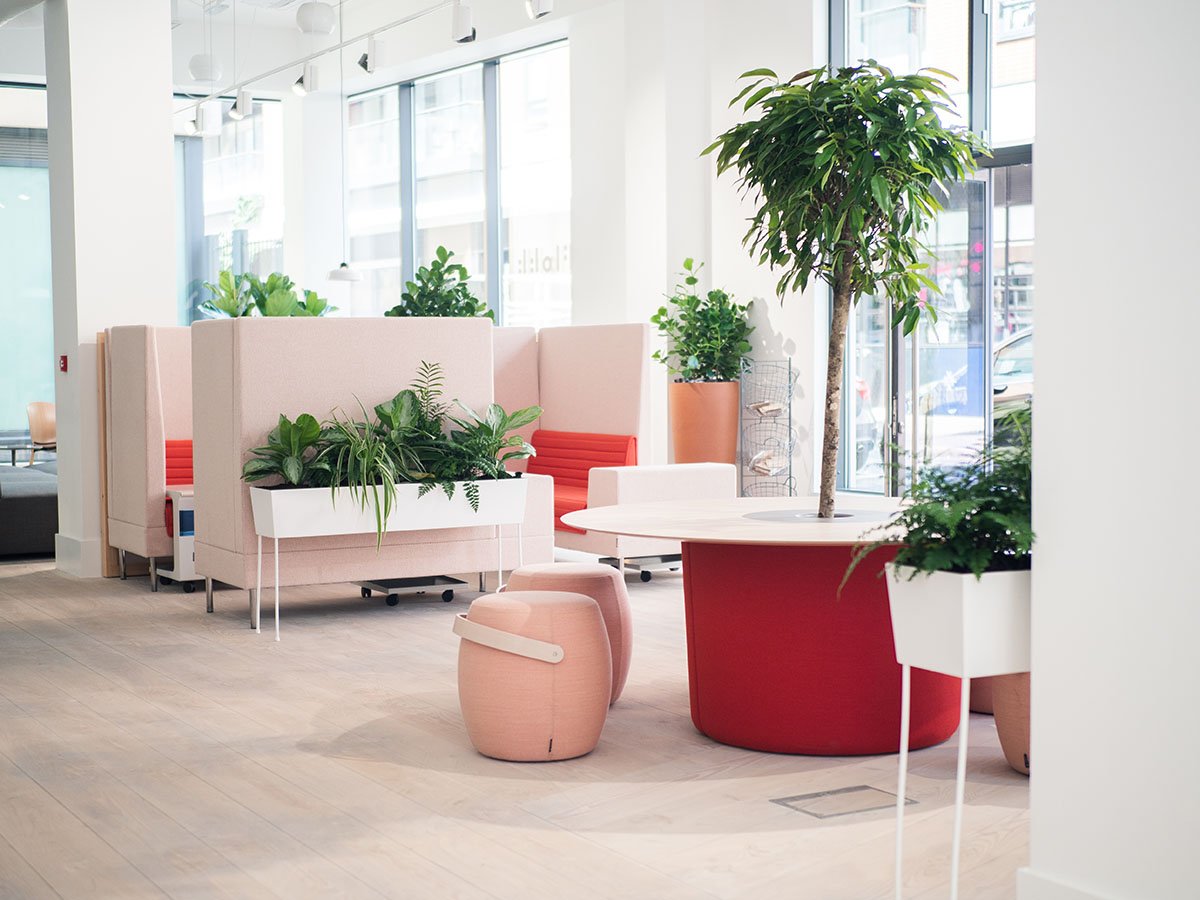Sound has always been one of the biggest distractions in the workplace. This idea is backed up by data from the Leesman Index, the world’s largest database on employee workplace experience. Back in 2019, when we interviewed Leesman Index CEO Tim Oldman, he told us;
"One of the things that emerged very early on was that certain factors shine out fairly consistently as being statistically linked to poor performance in workplace. Noise levels statistically are the strongest; an employee who is dissatisfied with noise levels is almost certainly going to be an employee who is not able to report that their workplace enables them to work productively."
This has only been amplified with the recent experiences of having a comfortable, quiet place to work at home. Added to that the fact the office pivoting to more digital collaboration, there is a growing need for proper acoustic solutions to improve employee workplace experiences.
How acoustic solutions work
Made from materials such as foam, fabrics, or mineral wood, acoustic solutions act as a means of reverberation control, working to absorb reduce and block disruptive sound. In large noisy places, they act to reduce how much and how far noise travels. In smaller confined spaces they act to reduce reverberation and, even out different sound frequencies. This is especially useful in rooms that host digital collaboration, as they can help to improve sound quality from speakers, making employee experiences more positive.
There is a range of acoustic solutions available for the workplace. Each type is suitable for different needs in different spaces.
Acoustic screens and room dividers: lightweight and agile, perfect for spaces that need to stay flexible.
Acoustic wall & ceiling panels: Works in any type of space that requires sound absorption or diffusion. Especially suitable for video communication suites, open-plan workspaces, or between work zones.
Hanging curtains & fabric screens: light diffusion, but acts well to disrupt visual distractions too. Can be useful for flexible spaces to create short-term enclosed spaces.
Alternative hanging acoustics: A novel way to reduce ambient noise in public spaces or open-plan workspaces, without blocking too much light or visual lines of sight.
Choosing where to place acoustic solutions
The simple answer is that you should consider acoustic solutions in places where you are suffering from noise distractions. Open-plan workspaces can benefit from a combination of acoustic paneling and room dividers, depending on the layout of the room. Larger, open spaces can take advantage of the quality of a range of hanging acoustic solutions, whilst acoustic panels also work well in areas between working environments to reduce how far noise travels. Booths and confined workspaces benefit from acoustic paneling to reduce echo and improve audio quality for digital communication.
There are other ways to affect audio quality in the workplace. Upholstered furniture, highback sofas, and even wider chair legs will absorb more sound when compared to harder materials, so these are things you should consider also if noise is a problem. You can also examine the layout of your workspace, making sure that noisy activities are not scheduled to take place close to areas where employees are focusing.
Making sustainable choices
Many of the common materials used in acoustic panels can potentially be unsustainable, made from fossil fuels, and potentially harmful chemicals. Flokk brand Offecct have been designing sustainable acoustic solutions for the workplace for over 20 years.
Launched in 2002, Soundwave® acoustic panels are made from recyclable polyester fibre and a separate filling that is made of recycled textile and PET. Available in a range of shapes, the Soundwave® collection is designed to be used as lightweight sound absorbers in the upper-frequency range (500 Hz and above). These panels help reduce disturbing reflections of environmental sounds such as voices and telephones.
Soundsticks® offer a novel way to divide space while reducing ambient noise in public spaces
or open plan workspaces. They consist of leftover fabric from our furniture production. Textile scraps are first moulded into the shape of a tube. The tube is upholstered with left-over fabric. Ends are sealed with caps of casted recycled aluminum.
Working with a range of internationally acclaimed designers, Offecct produces a range of stylish and sustainable products suited to different workspace needs.
Click here to learn more about the Offecct acoustic solutions today

